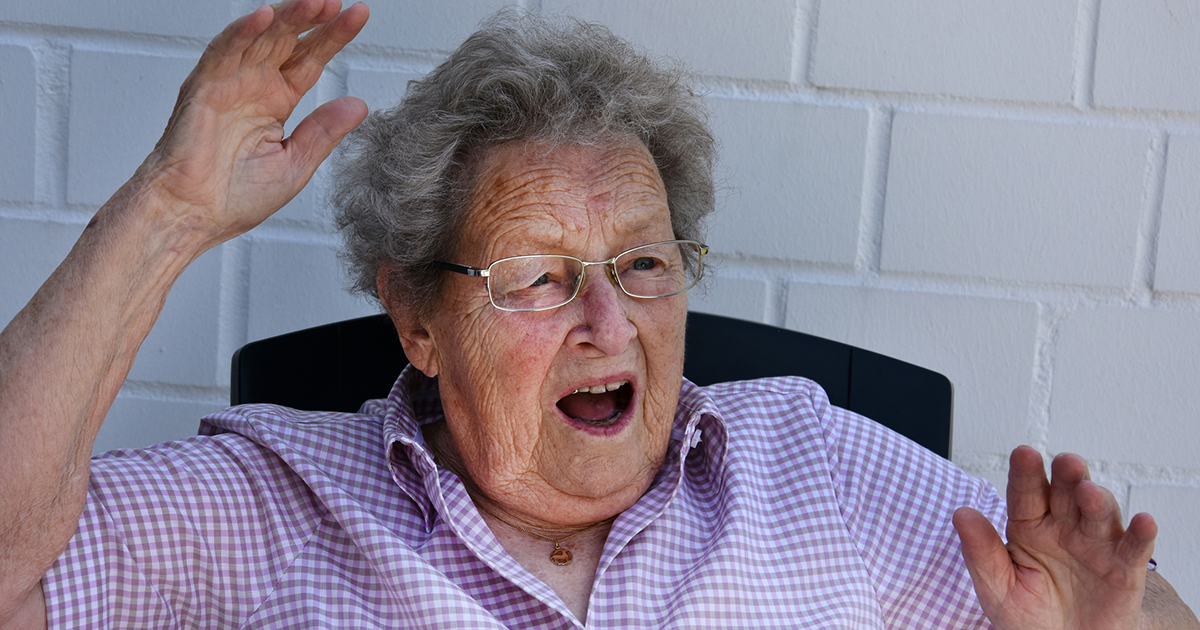Warning Signs Of Creutzfeldt-Jakob Disease
Creutzfeldt-Jakob disease (CJD) is a rare, degenerative, and fatal brain disorder, and only one individual in a million contracts the disease worldwide. Most victims are around sixty years old when they start showing symptoms, and most die within a year. Creutzfeldt-Jakob disease belongs to a family of diseases called prion diseases or transmissible spongiform encephalopathies (TSEs). A prion is a misshapen protein that causes degenerative diseases of the brain in humans and animals. 'Spongiform' describes the characteristic look of affected brains: the prions eat holes in them until they resemble sponges.
There are three main types of Creutzfeldt-Jakob disease. Sporadic CJD has no known cause and is by far the most common, affecting about eighty-five percent of patients. Familial Creutzfeldt-Jakob disease runs in families and is caused by mutated genes that can be identified through tests. Acquired CJD is caused by exposure to affected tissue from the brain or nervous system.
Symptoms of Creutzfeldt-Jakob disease include those described below.
Difficulty Walking

The early symptoms will depend on the type of Creutzfeldt-Jakob disease. A patient with sporadic or familial CJD will develop neurological symptoms first, including difficulty walking, which is caused by decreased coordination and balance. This will often mean increased stumbling and unsteadiness. Patients will often require assistance to be able to walk. As the disease progresses, the patient will often develop involuntary spasms of different muscles (myoclonus). While patients with variant Creutzfeldt-Jakob disease, caused by eating meat from a cow with 'mad cow' disease, will develop psychological symptoms first, they will develop the neurological symptoms like difficulty walking, about four months later.
Learn more about symptoms of Creutzfeldt-Jakob disease now.
Dizziness

Dizzy spells are often one of the first neurological symptoms to develop in patients with Creutzfeldt-Jakob disease, and many will go to a doctor complaining of dizziness and vertigo. In many cases, they will also have other symptoms like vision problems. Doctors will often perform diagnostic tests like magnetic resonance imaging (MRI) tests to check for abnormalities in the brain. MRIs are particularly useful in diagnosing Creutzfeldt-Jakob disease, as they have an accuracy rate of about ninety percent. Doctors may also order electroencephalograms (EEGs) that record the electrical activity in the brain and are thus useful in diagnosing most types of Creutzfeldt-Jakob disease. Cerebrospinal fluid tests are a newer tool that can actually detect the prions themselves.
Reveal more warning signs of Creutzfeldt-Jakob disease now.
Slurred Speech

Speech difficulties are another early symptom of Creutzfeldt-Jakob disease. One of the challenges in treating CJD is diagnosing it, as many of the symptoms resemble those of other dementias. The main difference is Creutzfeldt-Jakob disease progresses a lot faster and often kills the patient within a year, while most dementia patients can survive for several years. The difficulty is compounded if the patient has atypical symptoms. In February 2018, for example, the online science journal 'Case Reports Critical Care' described a patient with slurred speech, aphasia confusion, headaches, vertigo, and myoclonus. He also had constant, but non-convulsive seizures. The doctors performed a battery of tests to both diagnose his condition and rule out more common conditions like stroke or liver disease.
Creutzfeldt-Jakob disease is rare and is thus not likely to be the first disease a doctor considers when examining a patient who shows symptoms of dementia. Seizures can occur in about fifteen percent of patients with CJD, but they occur as initial symptoms in about three percent of patients. The patient’s aphasia, which took the form of trouble finding the right word to describe something, is also a symptom that usually develops later on as the disease progresses.
Get to know the next symptom of Creutzfeldt-Jakob disease now.
Vision Problems

In addition to causing fast-acting dementia, Creutzfeldt-Jakob disease damages the eyes. The patient will experience double vision and hallucinations, and they will eventually go blind. In the Heidenhain variant of Creutzfeldt-Jakob disease, vision problems are the first symptom to develop. In addition to hallucinations, vision problems can include the distorted perception of structures and colors, visual anosognosia, and cortical blindness. Many of the vision problems, like cortical blindness and visual anosognosia, are caused by damage to the brain’s occipital lobe. In fact, much of the brain damage in the Heidenhain variant is concentrated in the occipital lobe. Patients with the Heidenhain variant of CJD generally start displaying other symptoms days or weeks after their vision problems have appeared. Like other types of Creutzfeldt-Jakob disease, the disease progresses rapidly.
Discover the next Creutzfeldt-Jakob disease warning sign now.
Numbness And Tingling

Creutzfeldt-Jakob disease has a long incubation period, and it can take decades for the patient to develop symptoms after the initial infection. The prions gradually accumulate within the brain before reaching a tipping point and causing disease. Distorted sensory perceptions are another early symptom of Creutzfeldt-Jakob disease, and as a result, the patient may experience numbness on parts of the body, or they may feel a tingling sensation. There is, unfortunately, no cure for this condition currently, and the various treatments are intended to keep the patient comfortable. Since Creutzfeldt-Jakob disease has a rapid progression, the patient and their family should contact a hospice for palliative care and consider such end-of-life decisions like whether to put the patient on a breathing machine or not.